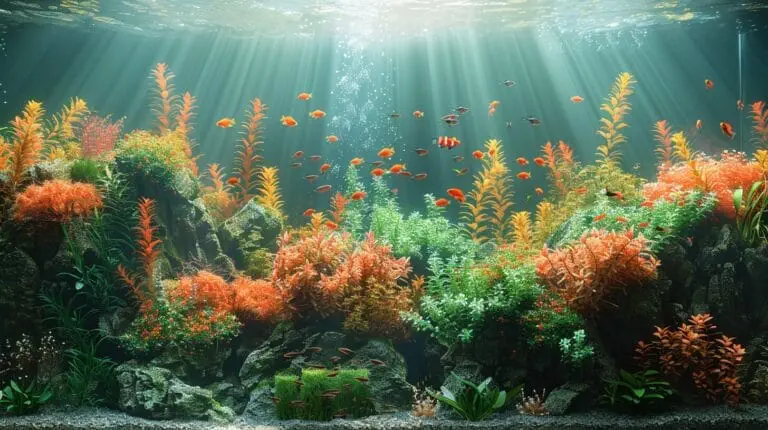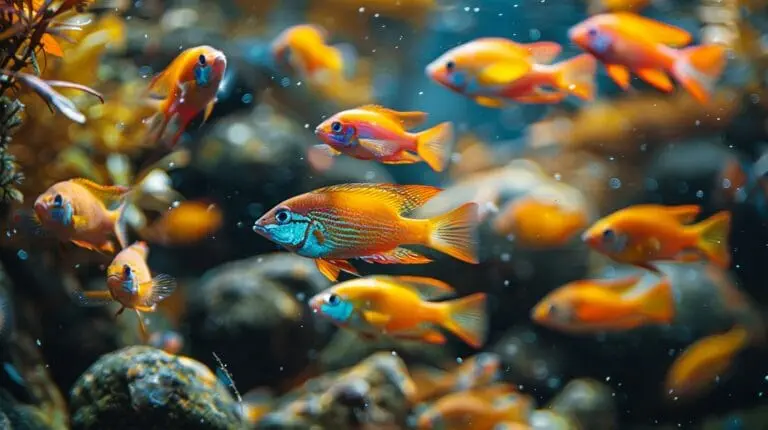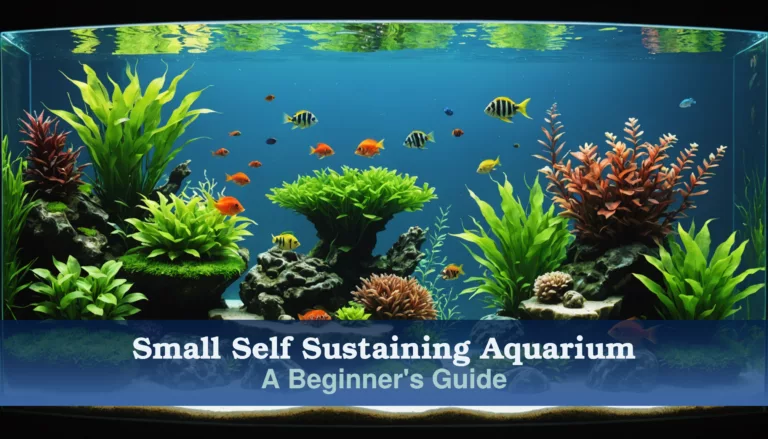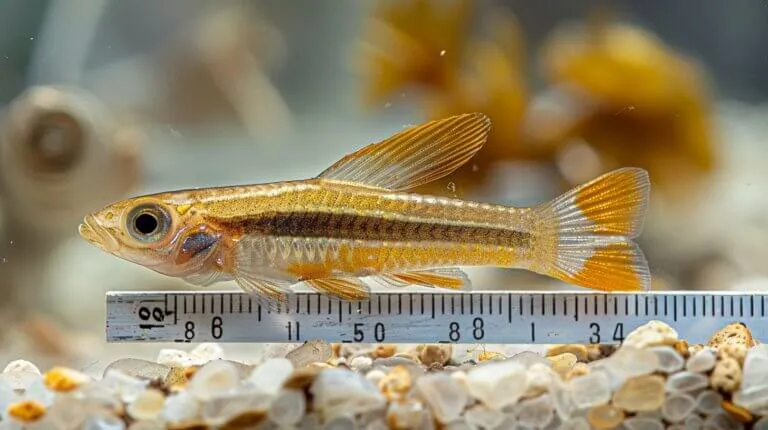Imagine casting your line into a shimmering lake, hoping to catch one of the most magnificent fish in the world! But can tarpon live in freshwater? This question is essential for aquarium hobbyists and anglers alike, as it opens up exciting possibilities for fishing and fishkeeping.
In this article, we’ll dive into the unique habitats of tarpon, explore their adaptability to different waters, and share tips for successfully catching them in freshwater. We’ll also uncover some myths and realities surrounding these amazing creatures. If you don’t grasp their habitat needs, you might miss out on the chance of a lifetime to fish for tarpon. So, gear up and get ready to learn all about these incredible fish and how they can fit into your aquarium or fishing plans!
Understanding Tarpon: Freshwater vs. Saltwater Habitats

The Natural Habitat of Tarpon Explained
Tarpon are large, impressive fish belonging to the genus Megalops. There are two main species: the Atlantic tarpon (Megalops atlanticus) and the Indo-Pacific tarpon (Megalops cyprinoides). Tarpon typically inhabit warm, shallow waters and can be found in both saltwater and freshwater environments. They often swim up rivers and access freshwater marshes, showcasing their adaptability. Juvenile tarpon thrive in freshwater, while adults usually return to saltwater as they mature. This ability to inhabit diverse environments makes tarpon a remarkable species in the aquatic world.
Behavioral Adaptations of Tarpon in Different Environments
Tarpon possess unique adaptations that help them survive in various water conditions. One key feature is their swim bladder, which allows them to breathe in low-oxygen environments. This air-filled organ helps them extract atmospheric oxygen, enabling survival in both freshwater and saltwater habitats. When tarpon gulp air at the surface, they gain energy bursts that enhance their swimming abilities. These adaptations allow tarpon to navigate effectively and thrive in diverse environments, from calm freshwater lakes to turbulent ocean currents.
Freshwater Tarpon: Myths and Realities
A common misconception is that tarpon cannot live in freshwater. However, this is not true. Tarpon can thrive in freshwater, especially in areas where fresh and saltwater mix, known as brackish water. These transitional zones provide suitable habitats for tarpon, allowing them to find food and shelter. Many freshwater sites, such as lakes and rivers in Florida, report healthy tarpon populations. Recognizing this reality helps aquarium hobbyists and anglers appreciate the adaptability of these beautiful fish, reinforcing that they can indeed flourish in various aquatic environments.
The Science Behind Tarpon’s Habitat Preferences

Physiological Adaptability of Tarpon to Freshwater
Tarpon are unique fish that can thrive in both saltwater and freshwater environments. Their adaptability comes from specialized swim bladders, which allow them to breathe air. This ability is vital in low-oxygen areas. When tarpon swim into freshwater, they can adjust to different salinity levels. This adaptability enables them to swim upstream into rivers or enter freshwater marshes, where they can thrive.
Juvenile tarpon show impressive resilience. They transition easily between water types as they grow, allowing them to use various habitats for feeding and growth. This versatility highlights their remarkable adaptability as a species.
Studies on Tarpon’s Survival and Growth in Freshwater
Research shows that juvenile tarpon often thrive in freshwater settings. They feed on insects and small fish, which are abundant in these environments. While adult tarpon typically return to saltwater, some remain in freshwater for extended periods. These habitats offer ample food sources and suitable conditions for growth.
In studies conducted in Florida’s freshwater lakes, juvenile tarpon have been observed growing quickly. These findings indicate that certain freshwater conditions favor their development.
Expert Opinions on Tarpon’s Freshwater Viability
Fishery biologists agree that while tarpon can live in freshwater, they are more commonly found in saltwater, especially near coastal areas. Transitioning to freshwater can influence their growth rates and breeding behaviors. Some experts warn that specific freshwater habitats may not always support healthy tarpon populations due to factors like water quality and food availability.
Experts emphasize that while tarpon can adapt to freshwater, the best conditions mimic their natural environments. Anglers and aquarium keepers should consider the specific needs of tarpon when evaluating their viability in freshwater settings. (Wikipedia on Tarpon)
Famous Freshwater Tarpon Locations

Case Studies: Successful Freshwater Tarpon Populations
Tarpon can thrive in both saltwater and freshwater. Several locations have established successful populations of freshwater tarpon. In Florida, rivers and lakes provide ideal habitats for these fish. For instance, the Suwannee River supports a population of juvenile tarpon. Here, they find food and shelter before migrating to saltwater as adults. These populations demonstrate the adaptability of tarpon and their ability to flourish in various environments.
Florida’s Freshwater Tarpon: A Closer Look
Florida is a hotspot for freshwater tarpon. The Lake Okeechobee region is particularly noteworthy. This large lake, surrounded by marshes and rivers, creates an optimal environment for tarpon. Anglers often catch tarpon in this area, especially during the warmer months. Additionally, the St. Johns River also hosts tarpon, mainly during their juvenile stages. This river provides easy access to freshwater habitats, showcasing how Florida’s diverse aquatic environments support tarpon populations (FWC).
International Waters: Tarpon Beyond the Ocean
Outside of Florida, tarpon have been spotted in various international freshwater environments. For example, in Central America, some rivers offer suitable conditions for tarpon. Countries like Costa Rica have recorded tarpon in freshwater rivers that connect to estuarine areas. Tarpon have also been noted in Southeast Asia, swimming in rivers that lead to brackish waters. These observations show that tarpon can adapt to different ecosystems, moving between freshwater and saltwater as needed (Wikipedia).
Angling for Freshwater Tarpon: Tips and Techniques

Gear and Bait Recommendations for Freshwater Tarpon
When fishing for freshwater tarpon, selecting the right gear is crucial. These fish are large and powerful, so strong equipment is necessary. Here are some recommended items to enhance your fishing experience:
- Fishing Rod: A medium to heavy-action rod is best. It should be at least 7 to 8 feet long to provide better leverage when battling a tarpon.
- Reel: Choose a quality spinning or baitcasting reel with a strong drag system. This helps manage the fight without breaking the line.
- Line: Opt for a braided line with a test strength of 50-80 lbs. This offers durability and reduces stretch, which is essential when dealing with these aggressive fish.
- Bait: Live bait often works best. Popular choices include:
- Live Mullet: Mimics the tarpon’s natural prey.
- Shrimp: Another effective bait option.
- Artificial Lures: Large spoons or plugs that imitate injured fish can also attract tarpon.
Catch and Release: Ensuring the Health of Freshwater Tarpon
Practicing catch and release is vital for the health of freshwater tarpon populations. Follow these best practices to release tarpon safely:
- Use Wet Hands: Always wet your hands before handling a tarpon. This protects the fish’s slime coat, which is crucial for its health.
- Circle Hooks: These hooks are easier to remove and cause less injury to the fish, increasing its chances of survival after release.
- Minimize Air Exposure: Keep the fish in the water as much as possible. If you want a photo, lift the fish just above the waterline.
- Revive the Fish: If the tarpon appears lethargic after release, gently hold it in the water, moving it back and forth to help it regain strength before letting it swim away.
Connecting with Local Anglers for Real-time Advice
Connecting with local anglers can provide valuable insights for fishing freshwater tarpon. Here are some effective ways to connect:
- Fishing Forums and Online Communities: Platforms like Facebook groups or fishing forums often have members sharing tips and experiences about freshwater tarpon fishing.
- Local Bait Shops: Staff at local bait and tackle shops can offer advice on the best locations, bait, and techniques for catching tarpon in the area.
- Fishing Guides: Hiring a local fishing guide can offer hands-on experience and knowledge about the best practices for angling freshwater tarpon.
- Fishing Clubs: Joining a local fishing club allows anglers to meet experienced fishermen who share their knowledge and provide support.
Conservation Efforts for Freshwater Tarpon

Challenges in Conserving Freshwater Tarpon Populations
Freshwater tarpon face many threats that endanger their survival. One significant issue is pollution. Chemicals and waste from farms and cities can contaminate their water, harming both the tarpon and their habitats. Habitat destruction is another major concern. As wetlands and marshes are drained for development, tarpon lose essential spawning and feeding areas.
Additionally, changes in water flow, often caused by damming rivers for human needs, can disrupt their migration patterns. These combined factors create challenges for tarpon to thrive in freshwater environments.
Ongoing Research and Conservation Projects
Conservation groups are dedicated to studying and protecting freshwater tarpon populations. Their research focuses on understanding the behaviors and needs of tarpon in these environments. For instance, they investigate where tarpon spawn and how they adapt to freshwater conditions.
Many efforts aim to restore damaged ecosystems by replanting native plants and improving water quality. Organizations like the Bonefish & Tarpon Trust actively promote sustainable fishing practices and habitat protection to support these populations.
How Anglers and Enthusiasts Can Help Protect Freshwater Tarpon
Anglers and fish enthusiasts play a crucial role in conserving freshwater tarpon. Here are some effective ways they can contribute:
- Practice Catch and Release: Anglers should return tarpon to the water after catching them. This practice helps maintain healthy populations and reduces stress on the fish.
- Report Sightings: Anglers should report any sightings of tarpon in freshwater to local conservation groups. This information assists scientists in tracking population trends and migration patterns.
- Participate in Clean-Up Efforts: Joining local clean-up initiatives in lakes and rivers helps remove pollution and safeguard tarpon habitats.
- Educate Others: Sharing knowledge about tarpon conservation with other anglers and the community raises awareness and encourages sustainable practices.
Conclusion
In this article, we explored whether freshwater tarpon can thrive in lakes and rivers. We learned that these amazing fish have unique adaptations, like their adaptable swim bladders, allowing them to survive in various environments. We also discovered that Florida is home to some successful freshwater tarpon populations, showcasing their resilience!
As you dive deeper into the world of aquarium fish, remember the importance of conservation for these beautiful creatures. With your curiosity and passion, you can help protect freshwater tarpon and their habitats. Keep exploring, and who knows what exciting discoveries await you in the fascinating world of fish!
FAQs
1. Can freshwater tarpon thrive in all lakes?
Freshwater tarpon can survive in certain lakes, but they do not thrive in all. These fish prefer brackish or saltwater for their best health. Factors such as water temperature, salinity levels, and food availability significantly impact their well-being. Tarpon often inhabit specific freshwater marshes and rivers, but their populations may struggle in isolated lakes. While they can adapt temporarily, their long-term survival is much better in brackish or saltwater environments.
2. What are the best practices for fishing freshwater tarpon?
Freshwater tarpon fishing requires specialized gear and techniques. Utilize heavy-duty rods and reels designed for their size and strength, paired with strong lines to prevent breakage. Live bait, such as mullet or crabs, is highly effective due to its movement. Prioritize catch-and-release practices by handling fish gently and minimizing their time out of water to ensure their survival. Connect with local anglers to gain valuable insights into recent catches and effective fishing methods. Joining local forums or fishing groups can enhance your overall experience.
3. How can I participate in conservation efforts for tarpon?
Conserving tarpon populations requires collective action. Practice responsible fishing by adhering to local regulations, using appropriate gear, and prioritizing catch-and-release practices. Join conservation organizations like the Bonefish & Tarpon Trust to amplify your efforts. Participate in local clean-up activities to maintain healthy aquatic habitats. Finally, spread awareness about the importance of preserving these magnificent fish and their ecosystems by sharing information through social media or community events.






